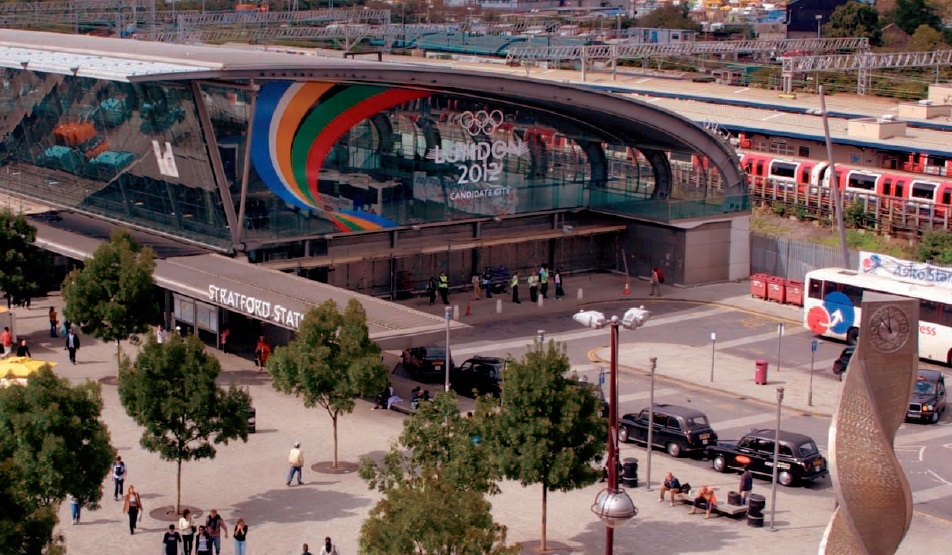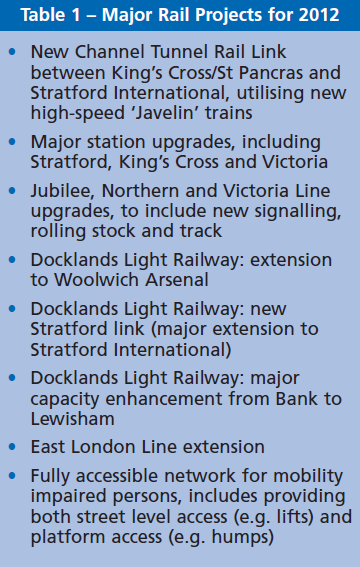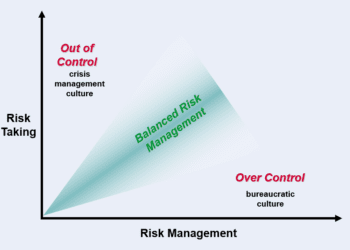The Olympic dream: integrated railways for 2012

Stratford Railway Station, 2012
On 27th July 2012, London will play host to the world’s largest sporting event – the Olympic Games – which will bring an estimated 9.7 million spectators to London over 16 days. Transport for London (TfL) has been tasked with providing a public transport system that will not only deliver games-specific projects and services but which will also maximise and enhance the use of the existing transport network [see Table 1].

Undeniably ambitious, this programme presents many technical, logistical and planning challenges which in turn give rise to many risks with the potential to adversely affect safety, reliability, performance and the reputation of London and the UK. Identifying, assessing and adequately controlling these risks are therefore crucial to the successful delivery of these projects as well as the success and long-term legacy of the 2012 Olympic Games.
Successful delivery centres around five main issues:
1. Technical integration
Difficulties or delays may arise from the technical challenges associated with integrating new technology into an existing operational railway. Competing factors include assuring a minimum of disruption to passenger service, while providing a final railway that delivers the expected performance. One example is the Victoria Line Upgrade Project which involves introducing new larger trains which will be run on renewed track, signalled by a new radio system which will operate from a new service control centre.
2. Physical integration
There are significant physical constraints placed upon any new system by the existing physical infrastructure. One important example is providing fully compliant mobility impaired access on an old, deep level tube system.
3. Commissioning and migration
Proving the functionality and reliability of new systems is complicated in many cases by the requirement to provide a period of running old and new systems concurrently, before switching over to the new system.
4. Access constraints
Much of the demanding Olympic works programme will be restricted to ‘engineering hours’ at night or over the weekend, and will need to minimise disruption during peak travel times. Each project will require dedicated planning, integrated logistics and flawless execution.
5. Programme and organisational complexity
The preparations for the Olympics are a hugely complex undertaking, with work being carried out by a myriad of supply chain partners. With this comes a large number of dependencies and interactions between diverse organisations, all with their own interests and priorities. The challenge will be to engender collaboration in such a way that the delivery of the Olympic railways is structured around key strategic goals rather than individual projects.
A RISK-BASED APPROACH: THE KEY TO SUCCESSFUL DELIVERY
As part of their day-to-day business, key stakeholders within each of the projects should aim to identify and understand their project risks, and as importantly, should make certain that they are being actively managed. To this end, visible links must be made between risk controls and their implementation. In addition to the traditional links to specific project tasks, links can also be made to responsibilities, procedures, competencies, verification activities and auditing protocols that underpin the project management system.
To support this endeavour, there is a range of well established risk management tools and techniques to draw on, together with best practice from both the railway and other business sectors.
CONCLUSION
As with all major projects, the Olympic railways programme has an array of project risks. Less routine are the sheer scale and diversity of risks associated with integrating new projects with the existing infrastructure and systems without disruption, coupled with the absolute nature of the delivery deadline. The project must be completed, successfully, on time. No ifs, no buts.
The key to successful project delivery lies in the continuous visibility of risks throughout the programme life-cycle. As important is the need to communicate and act on this information, not just within projects but also across organisational boundaries. Success for the 2012 Olympics means rising to the challenge now.
This article first appeared in RISKworld Issue 10.








